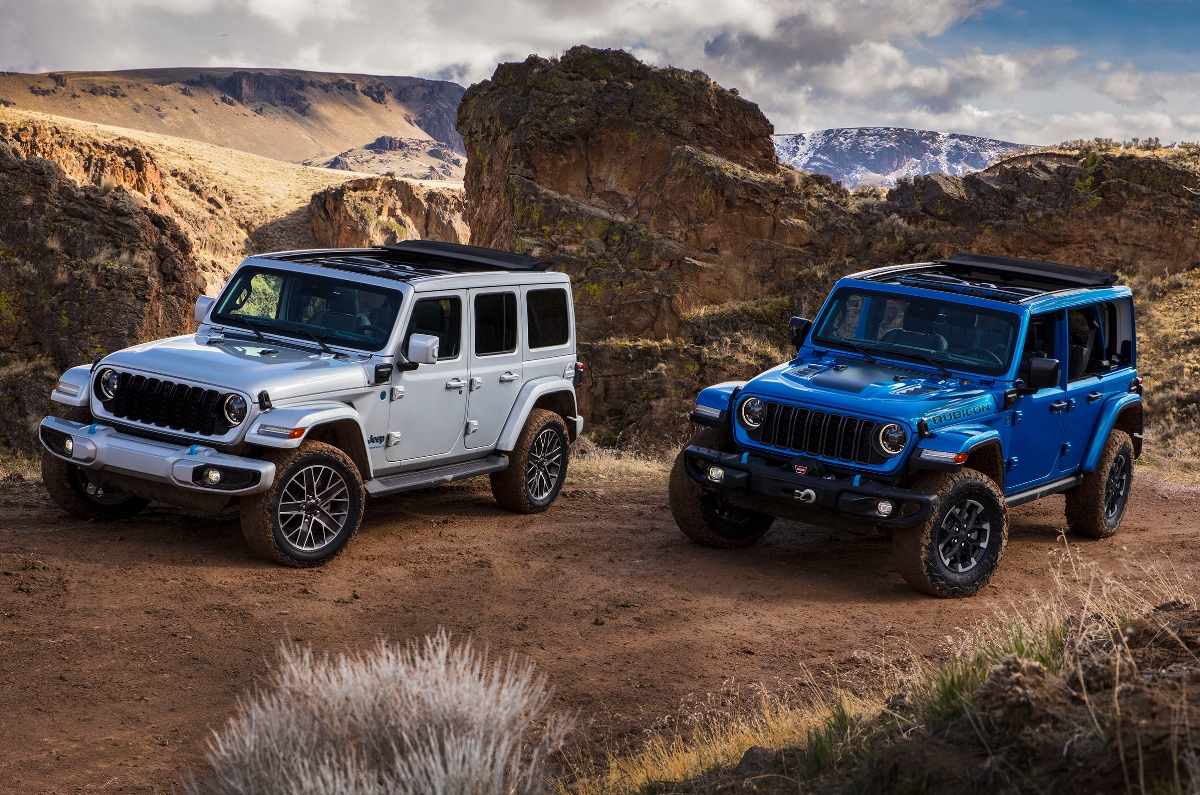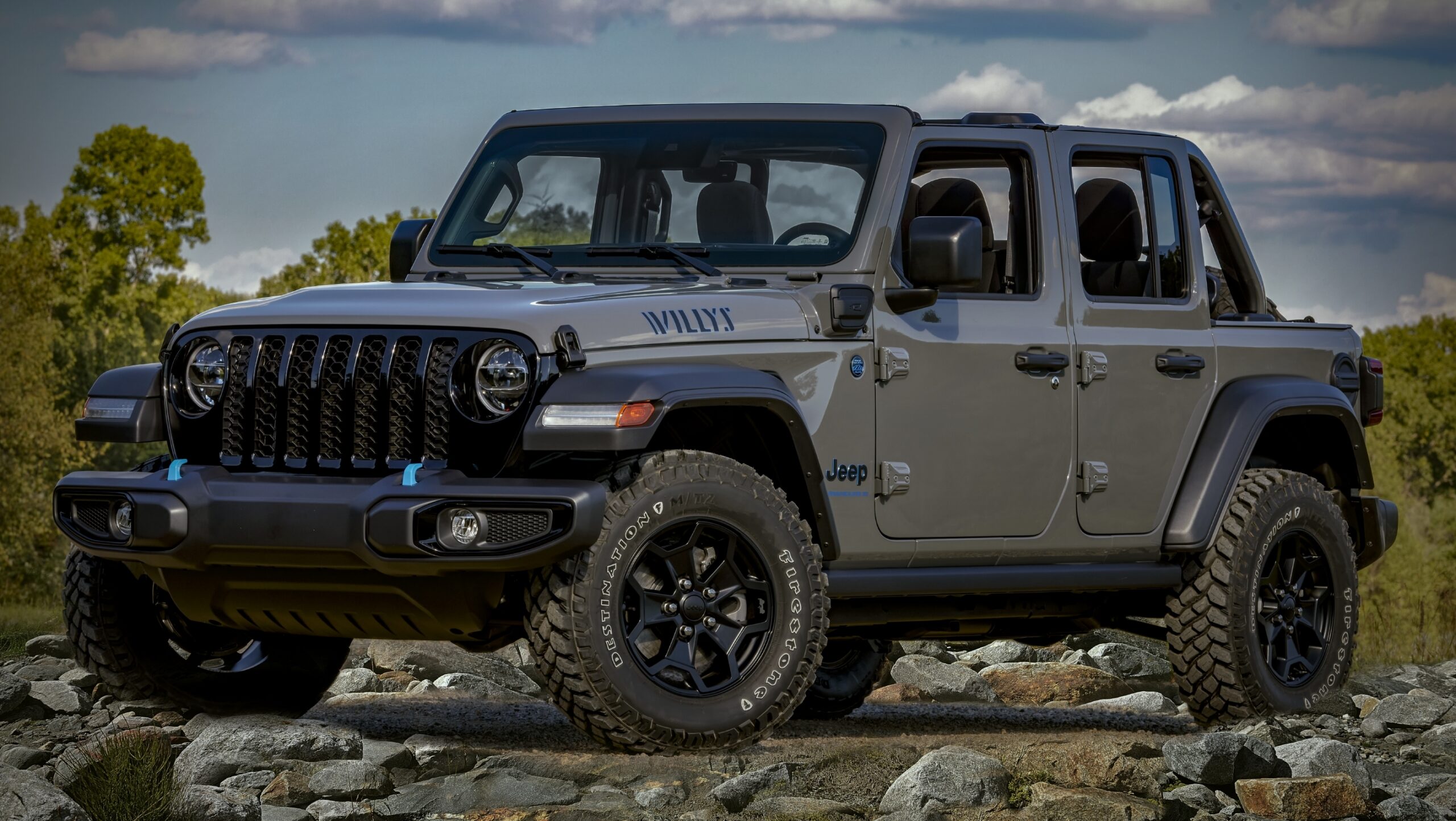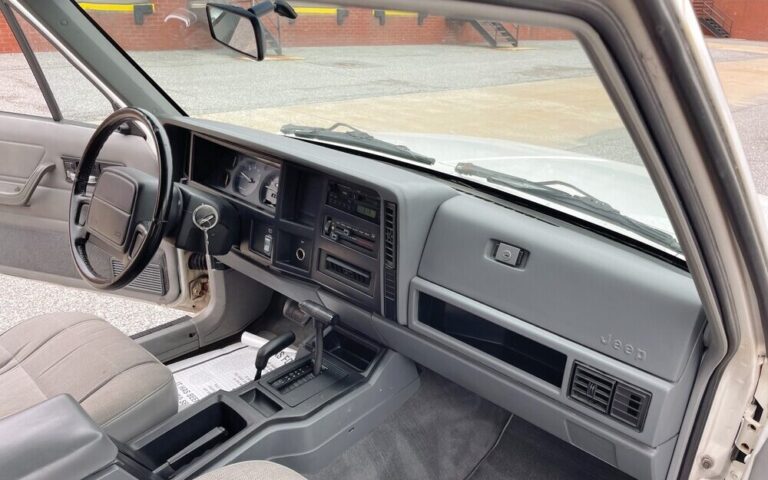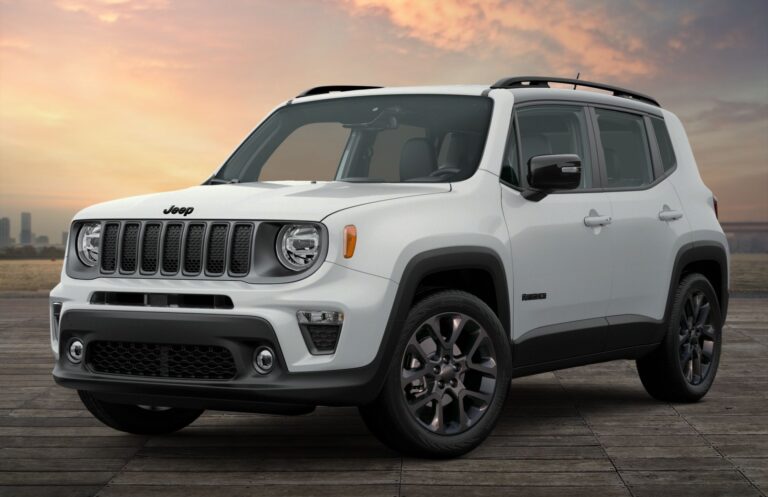Jeep WJ Off Road Tires For Sale: Your Ultimate Guide to Conquering the Trails
Jeep WJ Off Road Tires For Sale: Your Ultimate Guide to Conquering the Trails jeeps.truckstrend.com
The Jeep Grand Cherokee WJ, produced from 1999 to 2004, holds a special place in the hearts of off-road enthusiasts. Known for its robust unibody construction, capable Quadra-Trac and Quadra-Drive 4×4 systems, and comfortable interior, the WJ is a formidable platform for adventure. However, to truly unlock its potential and confidently tackle challenging terrain, the stock tires simply won’t cut it. This comprehensive guide, "Jeep WJ Off Road Tires For Sale," is designed to equip you with all the knowledge you need to select, purchase, and maintain the perfect off-road tires for your WJ, transforming it from a comfortable cruiser into an unstoppable trail machine.
Choosing the right off-road tires for your Jeep WJ isn’t just about aesthetics; it’s about safety, performance, and maximizing your vehicle’s capability on diverse terrains. From muddy trails to rocky ascents, the right set of tires provides the necessary traction, durability, and ground clearance to navigate obstacles with confidence. This guide will delve into the various aspects of off-road tires, helping you make an informed decision for your Grand Cherokee WJ.
Jeep WJ Off Road Tires For Sale: Your Ultimate Guide to Conquering the Trails
Understanding Your WJ’s Off-Road Ambitions
Before you even begin browsing for "Jeep WJ off road tires for sale," it’s crucial to assess your vehicle’s current setup and your personal off-roading goals. The ideal tire choice will vary significantly based on whether your WJ is stock or lifted, and what kind of trails you plan to conquer.
Stock vs. Lifted WJ Considerations
- Stock WJ: If your Grand Cherokee is at its factory ride height, your tire size options will be limited to prevent rubbing during turns or suspension compression. Typically, a stock WJ can accommodate tires up to 29-30 inches in diameter (e.g., 245/70R16 or 245/75R17), though some slight rubbing might occur at full lock or articulation with certain setups.
- Lifted WJ: A lift kit dramatically expands your tire choices. Common lift heights for WJs range from 2 inches (budget boosts) to 4 inches or more (long-arm kits). With a 2-inch lift, you can generally fit 31-inch tires. A 3-4 inch lift often allows for 32-33 inch tires, while larger lifts and extensive fender trimming can accommodate 35-inch tires or more. Understanding your lift height is the first step in determining appropriate tire sizes.

Intended Use: Tailoring Tires to Your Terrain
Your primary off-roading activity dictates the type of tire you need:
- Mild Trails & Overlanding: If your adventures involve mostly gravel roads, light dirt trails, and extended road trips, an All-Terrain (A/T) tire will offer a good balance of off-road capability and on-road comfort.
- Mud Bogging: For deep mud and slop, a Mud-Terrain (M/T) tire with aggressive, widely spaced lugs is essential for self-cleaning and maximum traction.
- Rock Crawling: Rock crawling demands robust sidewalls, excellent grip on uneven surfaces, and often larger diameters for ground clearance. M/T or specialized hybrid tires are preferred.
- General Purpose/Mixed Terrain: Many enthusiasts find a Hybrid or Rugged Terrain (R/T) tire to be a versatile choice, offering a compromise between A/T and M/T performance.

Types of Off-Road Tires for Your Jeep WJ
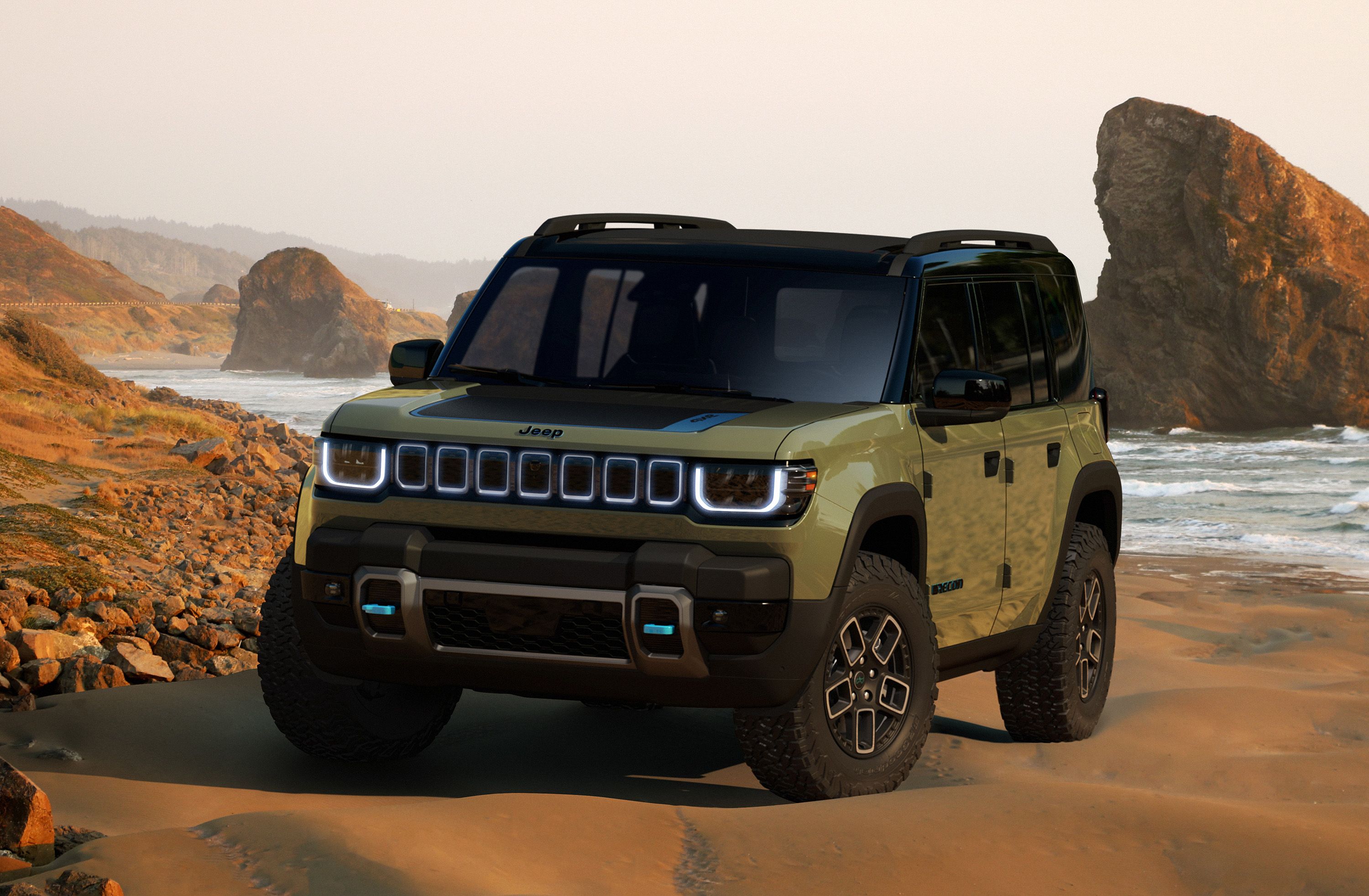
The world of off-road tires offers a diverse range of options, each designed with specific performance characteristics. Knowing the differences is key to making the right purchase when looking for "Jeep WJ off road tires for sale."
1. All-Terrain (A/T) Tires
- Characteristics: These tires feature a tread pattern that is more aggressive than a street tire but less so than a dedicated mud tire. They have interlocking tread blocks, siping for wet traction, and reinforced sidewalls.
- Pros: Excellent on-road manners (quieter, smoother ride), good wear life, decent off-road performance on dirt, gravel, and light mud, good in snow.
- Cons: Can clog in deep mud, not as aggressive as M/Ts for extreme conditions.
- Ideal For: Daily drivers that see occasional off-road use, overlanding, mild trail riding.
2. Hybrid/Rugged Terrain (R/T) Tires
- Characteristics: Bridging the gap between A/T and M/T tires, R/Ts offer more aggressive sidewall and shoulder lugs than A/Ts, providing better traction in moderate mud and rocky conditions, while maintaining better on-road manners than M/Ts.
- Pros: Versatile performance, good balance of on-road comfort and off-road grip, more durable than A/Ts.
- Cons: Can be slightly noisier than A/Ts, not as extreme as M/Ts.
- Ideal For: Enthusiasts who regularly hit the trails but still use their WJ as a daily driver, seeking a "best of both worlds" solution.
3. Mud-Terrain (M/T) Tires
- Characteristics: Defined by their large, widely spaced tread blocks, deep voids, and aggressive shoulder lugs. Designed to dig through and shed mud effectively.
- Pros: Superior traction in mud, loose dirt, and rocky terrain; excellent self-cleaning capabilities.
- Cons: Noisy on pavement, faster wear, reduced wet weather on-road traction, can be harsh riding.
- Ideal For: Dedicated off-roaders, rock crawlers, mud boggers, and those who prioritize extreme off-road performance over on-road comfort.
Key Tire Specifications and What They Mean for WJ Owners
Understanding tire specifications is crucial for making an informed decision when searching for "Jeep WJ off road tires for sale."
- Size: Expressed in two common formats:
- Metric (e.g., 265/75R16): 265 = tread width in mm, 75 = aspect ratio (sidewall height as % of width), R = radial construction, 16 = wheel diameter in inches.
- Flotation (e.g., 31×10.5R15): 31 = approximate overall diameter in inches, 10.5 = tread width in inches, R = radial, 15 = wheel diameter in inches.
- Relevance for WJ: Choosing the correct size is paramount for clearance, proper gearing, and maintaining vehicle performance.
- Load Range/Ply Rating: Indicates the tire’s load-carrying capacity and sidewall stiffness. Higher load ranges (e.g., C, D, E) are more durable and resistant to punctures, essential for heavier vehicles like the WJ and for airing down off-road.
- Tread Depth and Pattern: Deeper tread provides better traction and longer life. The pattern dictates performance in specific conditions (e.g., wide voids for mud, siping for wet roads).
- Sidewall Construction: Often reinforced on off-road tires with multiple plies or specific compounds to resist punctures from rocks and debris.
- UTQG (Uniform Tire Quality Grade): While primarily for street tires, the Treadwear rating can give an indication of expected tire life, though off-road use significantly impacts this.
Choosing the Right Size for Your WJ: Practical Advice
This is where the rubber meets the road (literally!). Selecting the appropriate tire size for your Jeep WJ involves balancing performance, aesthetics, and necessary modifications.
- Stock WJ: As mentioned, 245/70R16 or 245/75R17 are generally safe bets. Some may push to 30-inch flotation sizes (e.g., 30×9.5R15) with specific wheel backspacing, but rubbing is a risk.
- 2-Inch Lift: Opens the door to 31-inch tires (e.g., 265/75R16 or 31×10.5R15). This is a popular entry-level setup, offering noticeable ground clearance and an aggressive look without major modifications.
- 3-4 Inch Lift: Ideal for 32-inch or 33-inch tires (e.g., 285/75R16, 285/70R17, 33×12.5R15/17). At these sizes, you will likely need to address fender trimming, especially the front bumper and fender liner, and potentially extend bump stops to prevent rubbing at full articulation.
- Gearing Implications: Larger tires effectively change your final drive ratio, making your engine work harder. For 33-inch tires and larger, especially with the 4.0L engine, re-gearing your differentials (e.g., from 3.55 to 4.56 or 4.88) is highly recommended. This restores lost power, improves fuel economy, and reduces strain on your transmission, leading to a more enjoyable and reliable off-road experience.
Where to Find Jeep WJ Off-Road Tires For Sale
Once you’ve narrowed down your choices, the next step is finding a reputable seller.
- Online Retailers:
- Tire Rack, Discount Tire Direct, SimpleTire: Offer competitive pricing, vast selection, and direct shipping. You’ll then need to arrange local installation.
- Quadratec, 4 Wheel Parts: Specialty off-road retailers that often bundle tires with wheels and offer expert advice.
- Pros: Convenience, wide selection, often good pricing.
- Cons: No in-person advice, need to arrange installation, shipping costs can be high for large tires.
- Local Tire Shops:
- National Chains (e.g., Pep Boys, NTB, Mavis Tire): Can order and install tires, offer warranties and service packages.
- Independent Local Shops: Often more knowledgeable about specific vehicles like Jeeps, may offer personalized service.
- Pros: Professional installation, balancing, alignment services; local support for issues; can often match online prices.
- Cons: Potentially higher prices than online, selection might be limited.
- Specialty Off-Road Shops:
- Pros: Unparalleled expertise, often carry a wider range of aggressive off-road tires, can perform lift kit installations and re-gearing simultaneously, offer tailored advice.
- Cons: Can be more expensive than general tire shops.
- Used Market (Craigslist, Facebook Marketplace, Forums):
- Pros: Significant cost savings.
- Cons: High risk of purchasing damaged, unevenly worn, or expired tires. Always inspect thoroughly for cracks, punctures, and excessive wear, and check the DOT date code for age.
Installation and Maintenance Tips for Your Off-Road Tires
Proper installation and ongoing maintenance are crucial for maximizing the life and performance of your "Jeep WJ off road tires."
- Professional Installation: Always have your new tires professionally mounted and balanced. Off-road tires can be heavy and require specialized equipment for proper balancing to prevent vibrations.
- Tire Rotation: Rotate your tires every 5,000-7,000 miles to ensure even wear and extend their lifespan. Consult your tire manufacturer or a trusted mechanic for the recommended rotation pattern for your 4×4.
- Tire Pressure:
- On-Road: Follow the vehicle manufacturer’s recommended pressure (often found on a sticker in the door jamb) or the tire manufacturer’s guidelines, typically 30-35 PSI for off-road tires on a WJ.
- Off-Road (Airing Down): Crucial for off-road performance. Lowering tire pressure (e.g., 10-20 PSI, depending on terrain and tire construction) increases the tire’s footprint, providing more traction, a smoother ride, and better flotation over soft surfaces. Always re-inflate to road pressure before returning to pavement.
- Regular Inspection: Periodically check your tires for cuts, punctures, bulges, and uneven wear. Inspect tread depth and ensure lug nuts are properly torqued.
- Wheel Spacers/Backspacing: If your new, wider tires rub on suspension components, wheel spacers or wheels with appropriate backspacing may be necessary. Ensure any spacers are hub-centric and properly installed.
Budgeting for Off-Road Tires for Your WJ
The cost of "Jeep WJ off road tires for sale" can vary widely. Beyond the tires themselves, consider these potential additional expenses:
- Tire Cost: Expect to pay anywhere from $180 to $450+ per tire, depending on brand, size, and type.
- Installation & Balancing: Typically $15-$30 per tire.
- Alignment: Recommended after new tires and especially after a lift kit, usually $80-$150.
- Lift Kit (if needed): $300 (budget boost) to $2000+ (full suspension systems).
- Re-gearing (if needed): A significant expense, often $1500-$3000+ for parts and labor for both axles.
- New Wheels (if needed): If your current wheels aren’t the correct diameter or backspacing for your desired tire size.
- Fender Trimming Tools: Grinders, saws, etc., if you plan to do the work yourself.
Price Table: Representative Jeep WJ Off-Road Tire Options
Please note: Prices are estimated and subject to significant fluctuation based on brand, retailer, sales, and specific tire features. This table provides a general range for common sizes and types suitable for a Jeep WJ.
| Tire Type | Common Sizes for WJ | Estimated Price Range (Per Tire) | Key Features/Notes |
|---|---|---|---|
| All-Terrain (A/T) | 245/70R16, 265/70R16, 245/75R17, 31×10.5R15 | $180 – $300+ | Good for daily driving and light to moderate trails. Quiet, good wear, decent traction in most conditions including light snow. |
| Hybrid/Rugged Terrain (R/T) | 265/75R16, 285/75R16, 33×12.5R15/17 | $220 – $380+ | More aggressive than A/T, better off-road grip, especially in mud and rocks, but still reasonable on-road manners. A versatile choice. |
| Mud-Terrain (M/T) | 265/75R16, 285/75R16, 33×12.5R15/17, 35×12.5R17* | $250 – $450+ | Excellent traction in mud, loose dirt, and rock crawling. Aggressive looks. Noisy on pavement, faster wear. |
| Specialty (e.g., Winter-Rated A/T) | 245/70R16, 245/75R17 | $200 – $350+ | All-Terrain tires with specific winter ratings (3PMSF symbol) for enhanced snow and ice performance. |
Note: 35-inch tires require significant lift, re-gearing, and extensive fender trimming/modifications for a WJ.
Frequently Asked Questions (FAQ) about Jeep WJ Off Road Tires
Q1: What’s the biggest tire I can fit on a stock Jeep WJ without rubbing?
A1: Generally, a stock WJ can accommodate up to a 245/75R16 (approx. 30.5 inches tall) or 245/70R17 (approx. 30.5 inches tall). Some 30×9.5R15 tires might fit with optimal wheel backspacing, but rubbing at full steering lock or during heavy articulation is a possibility.
Q2: Do I need a lift for off-road tires on my WJ?
A2: For significantly larger off-road tires (31 inches and up), a lift kit is highly recommended to provide adequate clearance and suspension articulation, preventing rubbing and maximizing off-road performance.
Q3: Should I re-gear my WJ for larger off-road tires?
A3: For tires 33 inches and larger, re-gearing your differentials is strongly recommended. It restores power, improves fuel economy (especially with the 4.0L engine), and reduces strain on your transmission and drivetrain components.
Q4: What’s the best tire pressure for off-roading with my WJ?
A4: Off-road tire pressure is much lower than street pressure. For most terrains, dropping to 15-20 PSI is a good starting point. For deep sand or snow, you might go as low as 10-12 PSI. Always re-inflate to street pressure before driving on pavement.
Q5: How often should I rotate my off-road tires?
A5: To promote even wear and extend tire life, rotate your off-road tires every 5,000-7,000 miles. A 5-tire rotation (including the spare) is ideal if you have a matching spare.
Q6: Are used off-road tires a good idea for my WJ?
A6: Used tires can save money, but they come with risks. Thoroughly inspect them for cuts, punctures, dry rot, uneven wear, and check the DOT date code (first two digits are week, last two are year of manufacture) to ensure they aren’t too old (generally, tires over 6 years old are considered risky).
Q7: What’s the main difference between All-Terrain and Mud-Terrain tires?
A7: All-Terrains offer a balance of on-road comfort and off-road capability, with tighter tread patterns. Mud-Terrains have aggressive, widely spaced lugs for superior traction in mud and rocks but are noisy and wear faster on pavement.
Conclusion: Empowering Your WJ for Adventure
Choosing the right "Jeep WJ off road tires for sale" is one of the most impactful upgrades you can make to your Grand Cherokee. It’s a decision that directly influences your vehicle’s capability, safety, and your enjoyment on the trails. By understanding your WJ’s setup, your intended use, and the various tire types and specifications, you can confidently select the perfect set to match your off-road ambitions.
Remember to factor in not just the tire cost, but also potential modifications like lift kits and re-gearing for a holistic approach. With the right tires, proper installation, and diligent maintenance, your Jeep WJ will be ready to conquer new horizons, transforming every off-road excursion into an unforgettable adventure. Get out there, explore, and let your WJ take you further than ever before!
